THOMAS JONES PRISMATIC BRASS COMPASS VICTORIAN SURVEYING SCHMALCALDER c. 1852
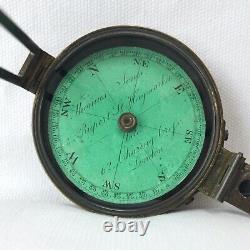
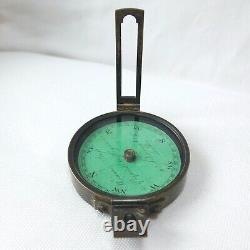
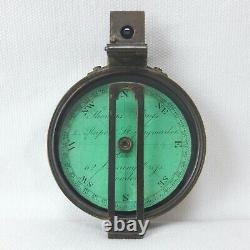
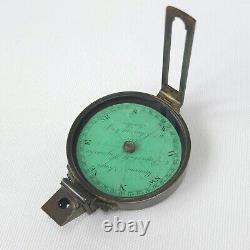
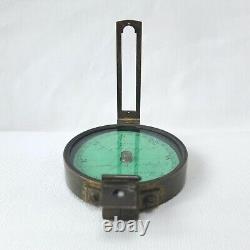
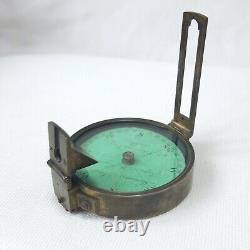
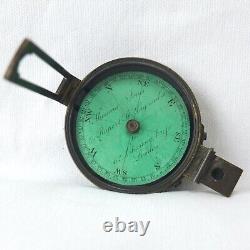
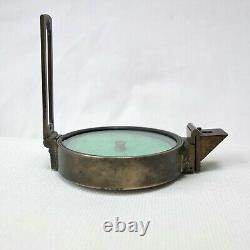




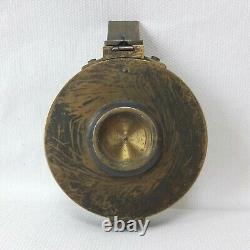
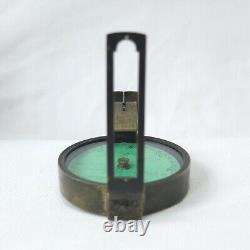


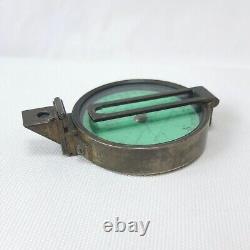

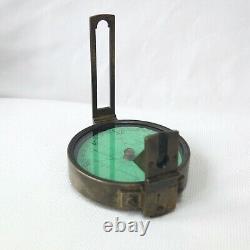

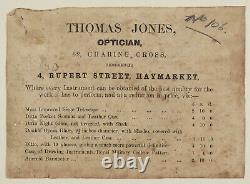
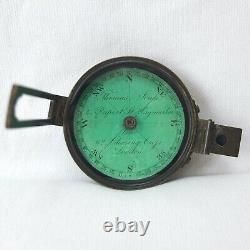

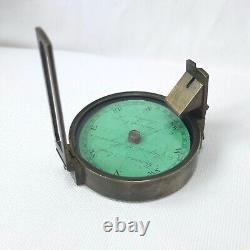

THOMAS JONES PRISMATIC BRASS COMPASS VICTORIAN SURVEYING SCHMALCALDER c. Thomas Jones Trade Card c. 1850 (for reference only, not included with compass). A Schmalcalder-type prismatic surveying compass, made in London between 1850 and 1852 by Thomas Jones, one of the finest scientific instrument makers of the Georgian and early Victorian eras. This is one of the last of these instruments that Jones made in his long and illustrious career. The compass card is signed'Thomas Jones, 4 Rupert St, Haymarket, Late 62, Charing Cross, London'. It is possible to date this compass very accurately, as Thomas Jones moved his business to Rupert Street in 1850, and remained there until his death in 1852. The compass is very much in the style of Jones' earlier Georgian work - he made the first prismatic compasses for Charles Schmalcalder, who had patented the design in 1812. Featuring a hand-drawn green compass card, lacquered brass case with prism and vane sights, transit lock, and manual brake.
There is a screw-threaded tripod mounting fixed to the base of the compass case. The case would originally have had a bronzed finish - some of this finish is still present, but much has worn away over time, revealing the brass underneath. Was one of the most celebrated makers of scientific instruments of the 19th century. Jones continued to assist Ramsden until the latter's death in 1800.
With his brother, Thomas Jones worked for private customers and for the trade, in particular for Charles Schmalcalder, working on Schmalcalder's Patent prismatic compass, and also for Edward Troughton of Fleet Street. By 1806 Jones had opened his first shop in Mount Street, off Berkeley Square, in 1811 he moved to 21 Oxenden Street, and in 1816 He moved to 62 Charing Cross. Major national observatories at home and overseas ordered their principal astronomical instruments from him including the Cape of Good Hope Observatory, Greenwich Observatory, Armagh Observatory and the universities of Oxford and Cambridge. In 1824 Thomas Jones of Charing Cross was appointed Mathematical Instrument Maker to the Board of Longitude, and also became a member of the Institution of Civil Engineers. Jones was one of the founder members of the Astronomical Society, and in 1835 he was elected as a Fellow of the Royal Society. Jones devised an all-metal travelling barometer and a transit instrument for Sir Henry Englefield, a lactometer for Sir Joseph Banks, and a small azimuth compass for Henry Kater. In 1850 He moved the business to 4 Rupert Street. Thomas Jones died in 1852 in his shop, and was buried at St James's Church, Piccadilly. His patent design of 1812, which introduced the idea of using an optical prism, combined with a sighting vane, to improve accuracy when taking bearings, is still in use today. Schmalcalder's innovation was a development of the work of Henry Kater.In 1811 Kater developed a design using a mirror and sighting vane. His design was then manufactured by Thomas Jones. Schmalcalder, who also knew Thomas Jones, is believed to have seen Kater's new compass at Jones' premises, and this gave him the idea for his own prismatic version.
Schmalcalder moved swiftly to have prototypes of his own design made by Jones, which he then went on to patent. Winning the race to patent his innovation, Schmalcalder's compass completely eclipsed Kater's earlier design.Schmalcalder continued in business until around 1840, with his design being used uncredited by many other makers, such as Simms, Barker, Jones, and Troughton after the patent expired in 1826. No doubt as a result of this, Schmalcalder fell on hard times, dying in poverty in 1843 and being buried in the Strand Union Workhouse cemetery. In good condition, and full working order. The compass finds North well.
The glass, sighting vane, prism and compass card are in good condition. The case would originally have had a blackened or'bronzed' finish - some of this finish is still present, but in places it has worn away over time, revealing the brass underneath.
I have several other antique compasses listed at the moment. _gsrx_vers_1677 GS 9.8.1 (1677).

